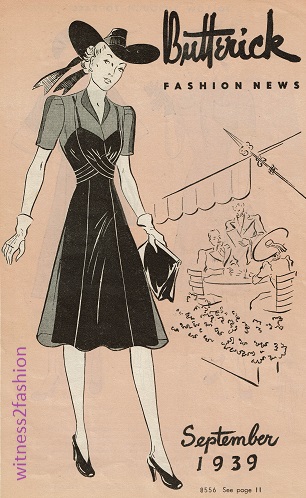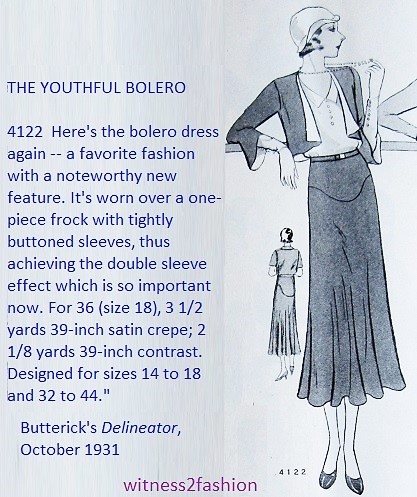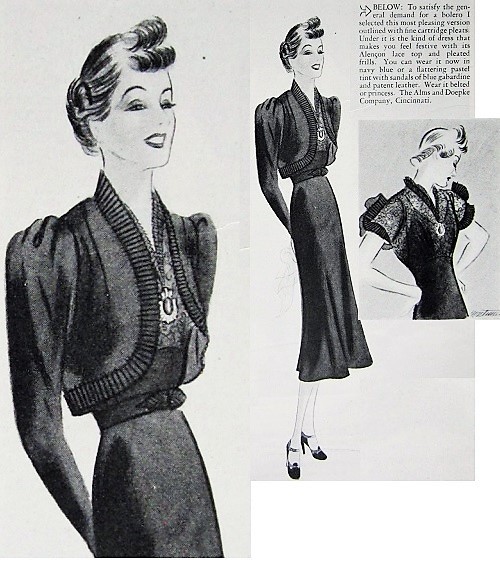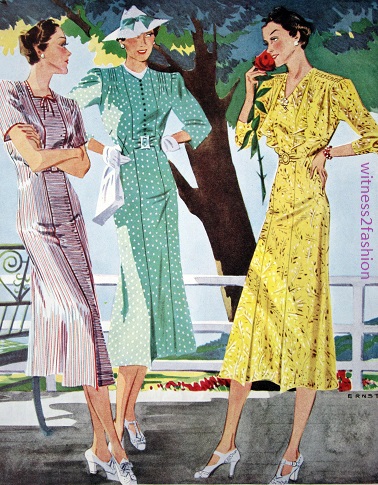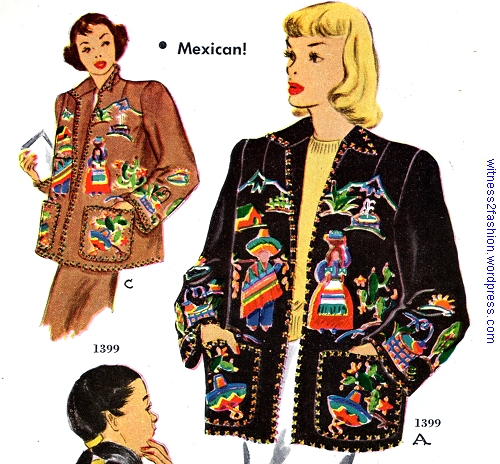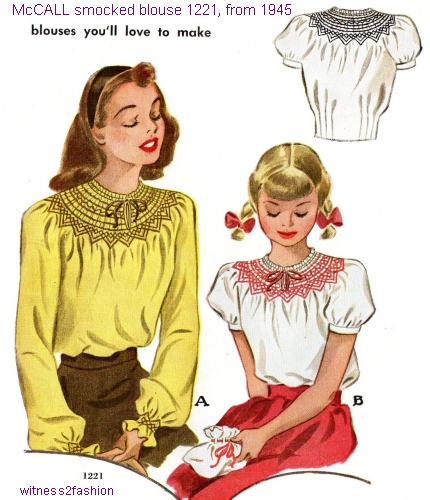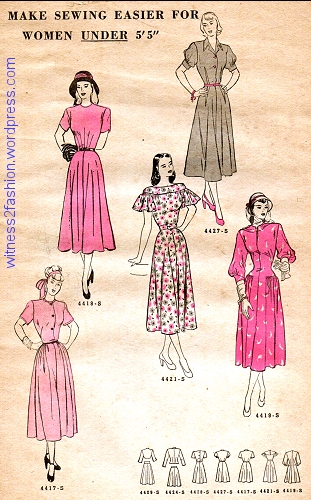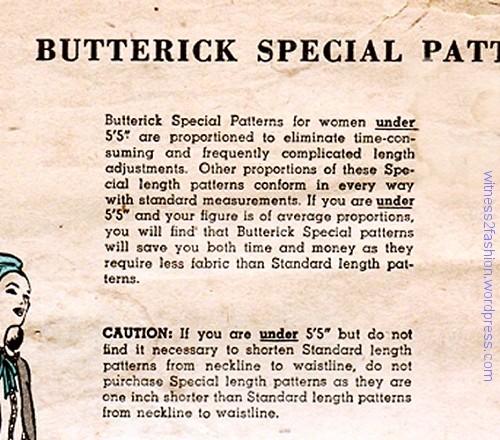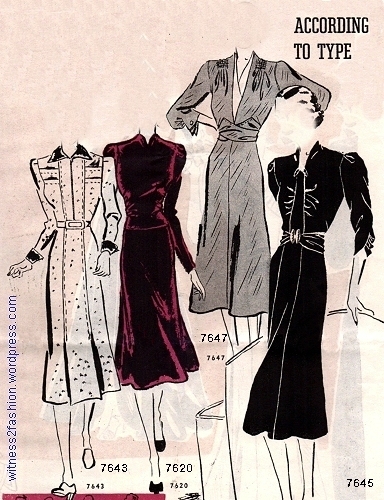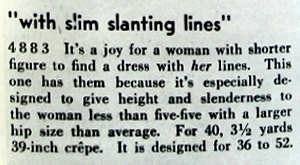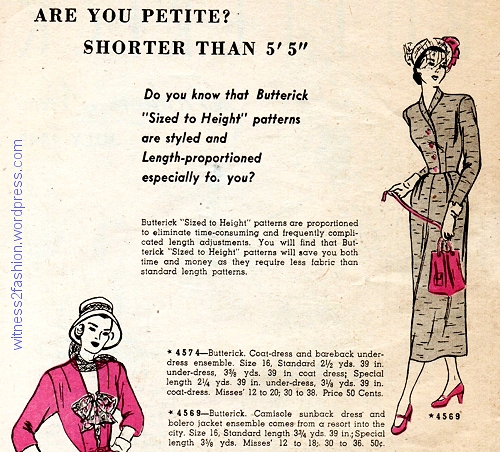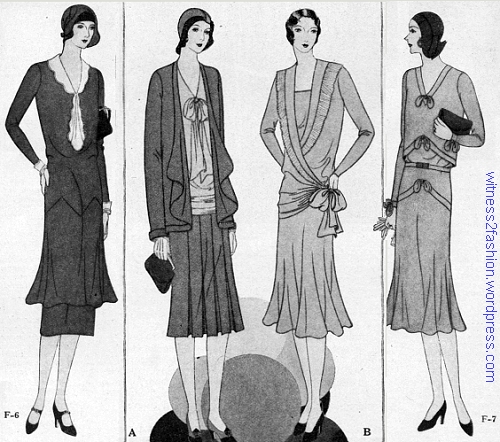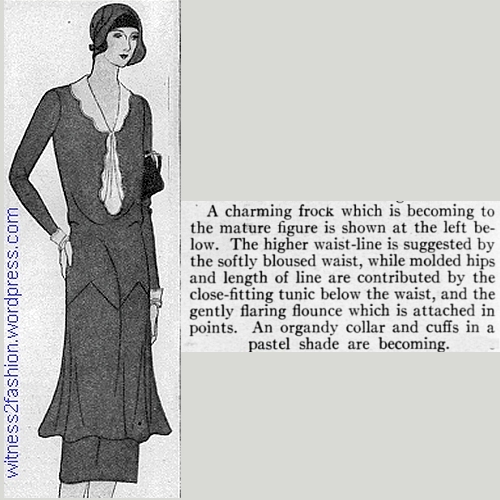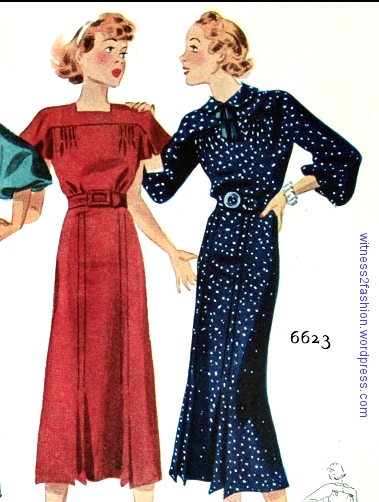
Holiday party aprons for little girls, McCall pattern 1281, from a needlework catalog for December 1946.
Back in the mid-twentieth century, before women wore casual slacks or jeans to do housework, the apron was a useful, and often elaborate, handmade gift. Aprons were not included in the rule that gifts of clothing were too intimate for anyone but family members. Pattern catalogs and women’s magazines usually featured apron patterns in November and December; in my parents’ home, one sign that Christmas was approaching was the making of pajamas and aprons.

“Holiday Aprons” from Woman’s Home Companion, December 1937. Companion-Butterick pattern No. 7652.
The elaborate backs of these aprons may be surprising to those of us who are used to modern, store-bought, unisex aprons. These were serious aprons that protected your dress.

Back views and text for Companion-Butterick apron pattern 7652. Dec., 1937. “Triad” meant three designs in one envelope.
This unisex apron set from 1950 shows the basic outline of inexpensive, utilitarian aprons like the ones in my kitchen today; in 1950 they were called “barbecue” aprons, and the idea of a man cooking and wearing an apron at home was no longer just a joke — although the gift aprons were often intended to be humorous.

His and Hers barbecue aprons. McCall pattern 1515, circa 1950.
This apron set, found in a McCall Needlework catalog from May, 1950, has elaborate appliques, and would probably have been intended as a gift set — made for a friend, or newlyweds, or intended to be sold at a charity bazaar.
Making aprons to sell at fundraisers is an old tradition. The Ladies’ Home Journal suggested making these aprons for a fundraiser during WW I:

Aprons to make for a Charity Bazaar; Ladies’ Home Journal, October 1917. (In 1917, some skirts also had a ruffle at the waist.) Many women still wore “pinner” aprons, without straps, like those at right.
Of course, when women made aprons for themselves, they might prefer a simple shape, bound in bias tape…

Two versions of Butterick apron pattern 6874, from 1926.
… but frilly, sometimes silly, labor-intensive aprons were a staple of holiday gift-making.

McCall called this a “little girl look” apron. Pattern 917, McCall Needlework catalog, Dec. 1946, but first issued in 1941. [I can picture June Allyson in this one.]
You can see the pattern piece shapes for No. 917 from a copy in the CoPA collection;
click here.
Aprons like the ones below, often decorated half-aprons, were called “cocktail aprons” or “bridge aprons,” [for hosting card parties] and were worn while entertaining, not cooking or washing dishes.

Apron decorated with sequinned hearts. McCall 1278, from a 1946 needlework catalog. I have also seen aprons with sequinned martini glasses on them….

Simplicity apron No. 1805, dated 1956. Starching and ironing those ruffles would be time consuming.

This apron, McCall 1312, made from sheer fabrics and delicately appliqued, might be a gift to a bride. It evokes a fantasy of housework, unrelated to reality. 1950 needlework catalog.
I suspect that many fancy aprons were re-gifted and never worn (probably why so many delicate aprons survive in vintage collections.)
This one, decorated with Scottie dogs, is my virtual gift to The Vintage Traveler.
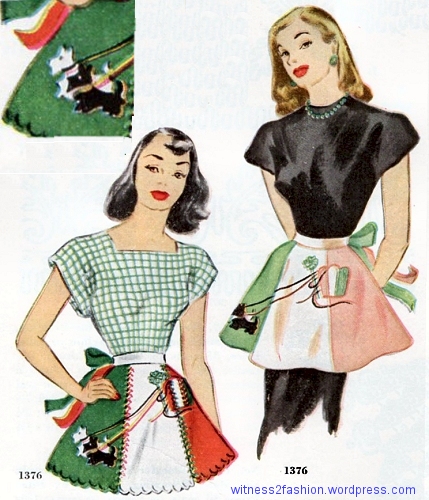
McCall Scottie dog apron, before 1950. I prefer the version on the right.
Aprons and Sewing Classes
Many girls and women made aprons while learning to sew. A simple half apron was well within the abilities of elementary school students, and many a proud mother must have received an apron — far too pretty to wear — for Christmas, Mother’s Day, Valentine’s Day, etc.

McCall apron 1096 — an appropriate Valentine gift. Photographed from a 1946 needle work catalog, but it dates to 1943.

Simplicity aprons from 1956, pattern No. 1789. Even a beginner could make version 4, or apply rickrack, as in version 3.
A Super-Successful Apron Pattern
I found three McCall needlework catalogs (1946 to 1950) at an estate sale; some apron patterns were so successful that they appeared year after year, so a three-digit pattern number is often an indication that the pattern pre-dates 1946. This one first appeared in 1941 and was still in the catalog for November, 1950 — nine years later.

McCall pattern 884, called the “Necktie” apron dates to 1941 and was still being offered in 1950 –and, possibly, later.
The Necktie apron — cut in many sections — had to be folded to be ironed correctly:

Necktie apron, McCall 884. It is shown folded for ironing at the left.

Necktie apron description from 1946 catalog. Rickrack trim was applied behind its edges, so that only half the trim was visible. Other designs used rickrack more obviously:

Rickrack was applied to the outsides of these aprons, McCall 987, from 1942. The tassels would be rather impractical.
Mother-Daughter Aprons
In the post-war period it was generally assumed that little girls wanted to grow up to be housewives, just like their Mommies. You could buy identical apron patterns for children and women, like these:

McCall apron pattern 1532, for women. May 1950 needlework catalog.
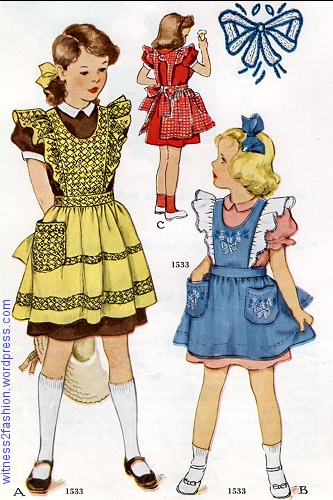
The child’s version of McCall 1532 was McCall 1533.

This Butterflies apron was also available in a child’s version. (From 1946) McCall No. 1257.

A daughter (or little sister) version of the Butterflies apron was McCall 1258.
Once upon a time, little girls wore dresses all day, and protected them with aprons or pinafores. Women also expected a practical apron to protect their dresses from cooking spatters and laundry suds; except for their elaborate embroidery or appliques, these aprons would do the trick:

McCall apron No. 1209 covered most of the dress. 1940s.
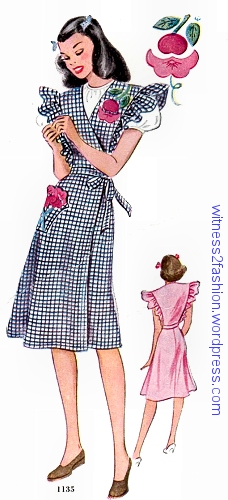
“Kitchen pet of the career girl — this young apron … completely covers the dress. Pinafore ruffles give the smart broad-shouldered look.” McCall 1135. Circa 1945.
The apron below is really unusual — but I’ll save the other aprons with novelty pockets for another day!

A tulip forms a novelty pocket on this unusual, fasten-in-front apron. McCall 1403, from 1948.
Although it looks complex, this apron would lie completely flat for ironing — more practical than it looks.

Happy Thanksgiving! I hope you’re inspired to cook up something delightful.
